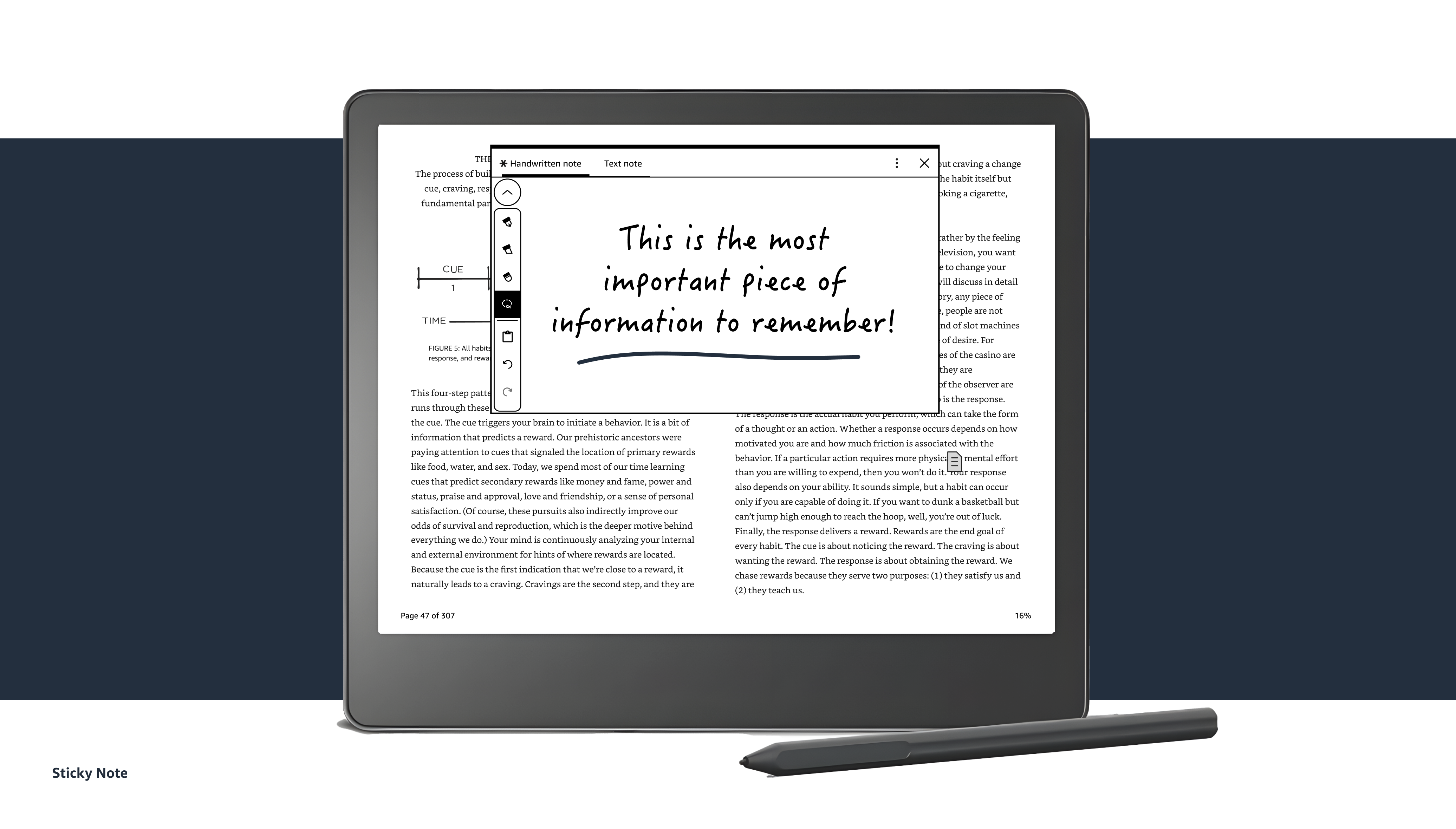AMAZON
KINDLE SCRIBE
WRITING EXPERIENCE
thE FIRST KINDLE FOR READING & WRITING
The next generation of Kindle that unites reading with writing. The premium Paperwhite display feels like reading and writing on paper, with crisp text and ample space for larger fonts, images, charts, and documents. Designed for reading and notetaking in millions of books, adding notes to documents, journaling, and more.
I was charged with concepting and designing the in-book writing experience, design tools to help writing tasks, and achieving the business objective of adopting more customers to the Kindle Scribe, which will later be ported to other devices such as iOS, Android, and FireOS. The purpose of in-book and writing CX on the Kindle Scribe is to build on top of the Kindle reading experience and integrate stylus functionality seamlessly for a dual reading and writing experience. This new experience targets non-fiction readers, higher education students, and professionals whose behavior combines active reading and writing. You can see the final results on the Kindle Scribe Learn More page.
DESIGN GOALS
- Deliver a beautiful cross-device experience that is functionally consistent, but authentic to the devices it lives on. Our best customers read on several devices and should not experience fundamental differences when reading with Kindle on different devices. (ie: E-READER, IOS, Android, and FireOS).
- Design around customer expectations, not organizational structures. I strived to optimize our CX by mapping our information architecture to customer behaviors and priorities, while considering the full reader life cycle.
- Design new tools and features that help customers annotate content within the book.
- Optimize the Kindle CX for habitual engagement both in terms of repeat visits and time spent reading or writing.
- Reading should be a delightful experience. The Kindle app should reflect that with a visually modern design and easy to use interaction models
EXPERIENCE STRATEGY
Problem Statement
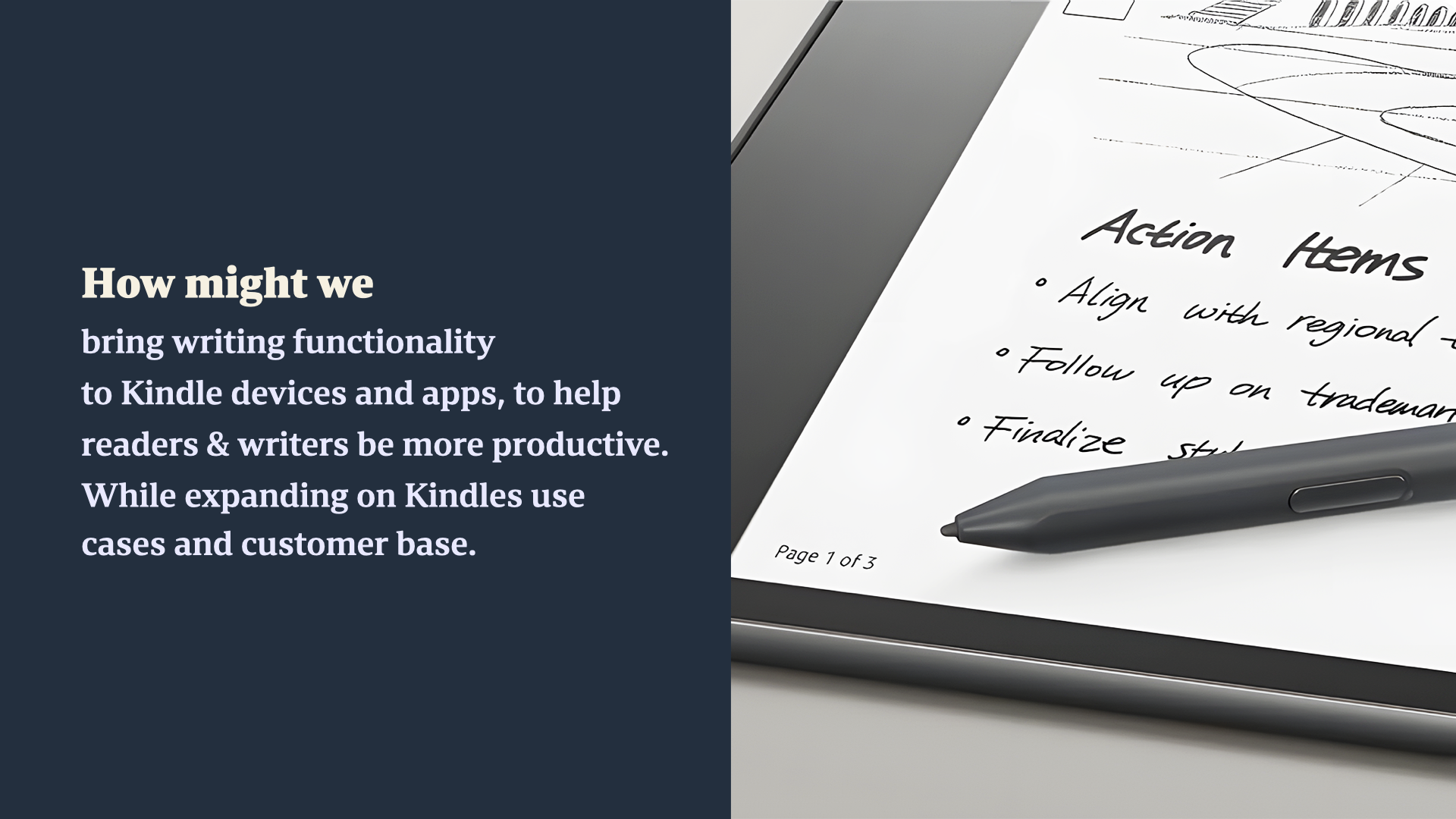
The stratagy was to enable freehand writing across any digital page. Paired with Kindle’s beloved reading experience, and provide a revolutionary step forward for reading and writing within the kindle platform. This would be the first-ever stylus-enabled Kindle E-reader. This experience includes the ability for customers to take notes in proprietary rendering formated content. And it would allow them to write directly on PDF content, create sticky notes in our native Reflowable content, view a consolidation of their notes for a book in an Annotations Notebook, write on personal documents and create annotations within books.
I also worked to inspire a longer term vision, focusing on reading, writing, processing (markup/content related notes) and traditional note-taking (notes, journals etc) for customers. Allowing the scribe to unlock and expand its writing capabilities. New opportunities will be created providing our customers a best-in-class reading and writing experience. It is clear that we supporting customers throughout their content journey - be it reading, creating, managing, organizing, sharing or collaborating on written content, across all Kindle supported devices.

UNDERSTANDING OUR CUSTOMERS & THE OPPORTUNITY
Working with the Research team we conducted workshops reviewing insights and infromation collected about our readers to date. In the workshop, the team reviewed both qualitative and quantitative data from 11 research studies and over 4138 data points.
The team focused on identifying the segment readers based on their behaviors and motivations towards discovery, evaluation, purchasing, reading, writing and deepening their relationship with reading in general.
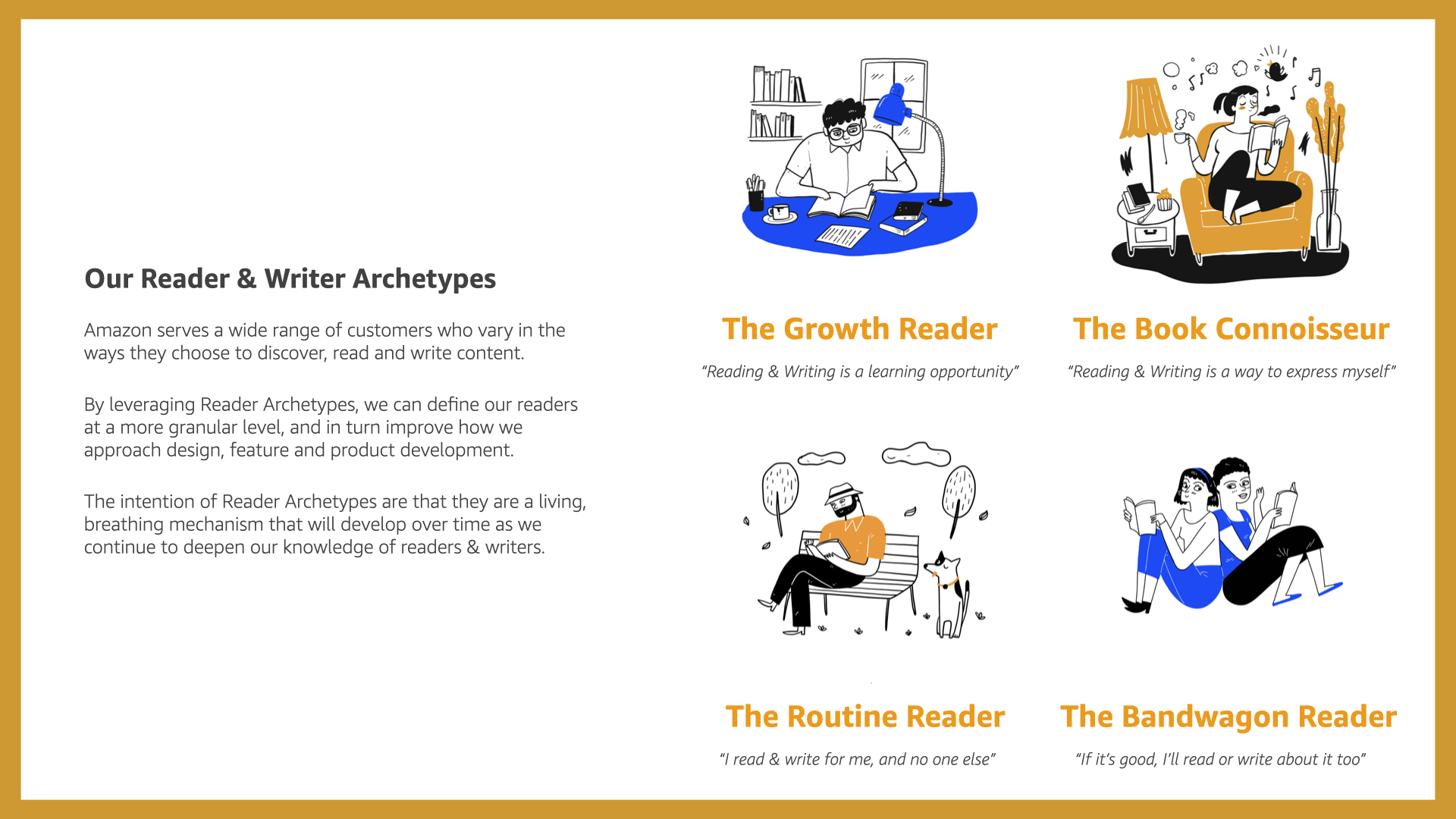
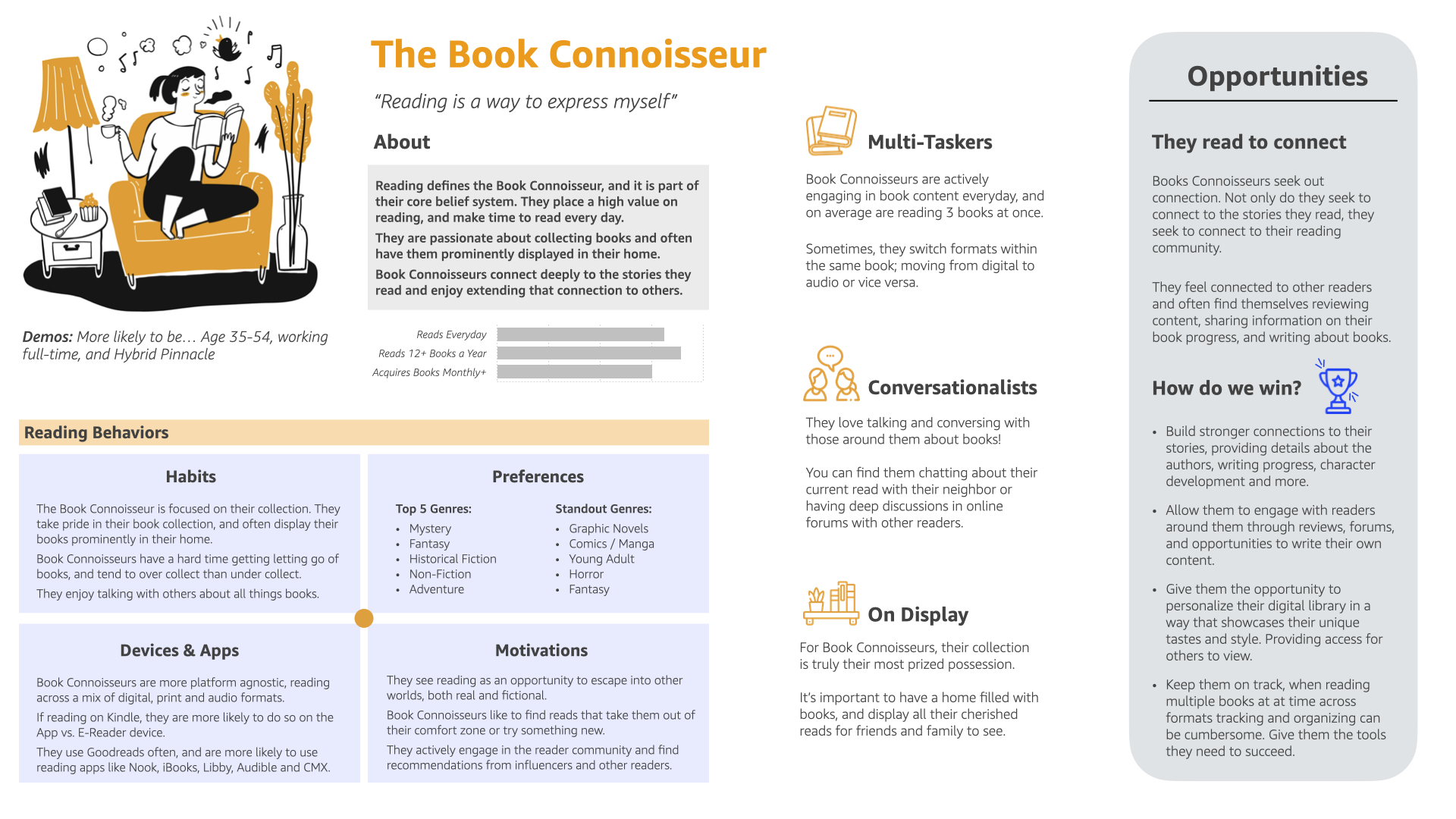
Following the creation of our customer Archetypes, we planned to test them at scale via a quantitative segmentation survey, however due to shifting priorities that work was not completed. But nontheless given the large sample and body of work that went into the Archetypes, there was high confidence that they were well representative of the most common readers & writers in the population.

IDEATING SOLUTIONS
I began by workig with stakeholders and collecting business requirements. Then I started to iterate on several different use cases workig through customer stories for each case and coming up with a set of ideas and concepts. Below are a few samples of low-fidelity concepts:
Sticky note (Iteration 12)

Annotation Notebook (Iteration 24)
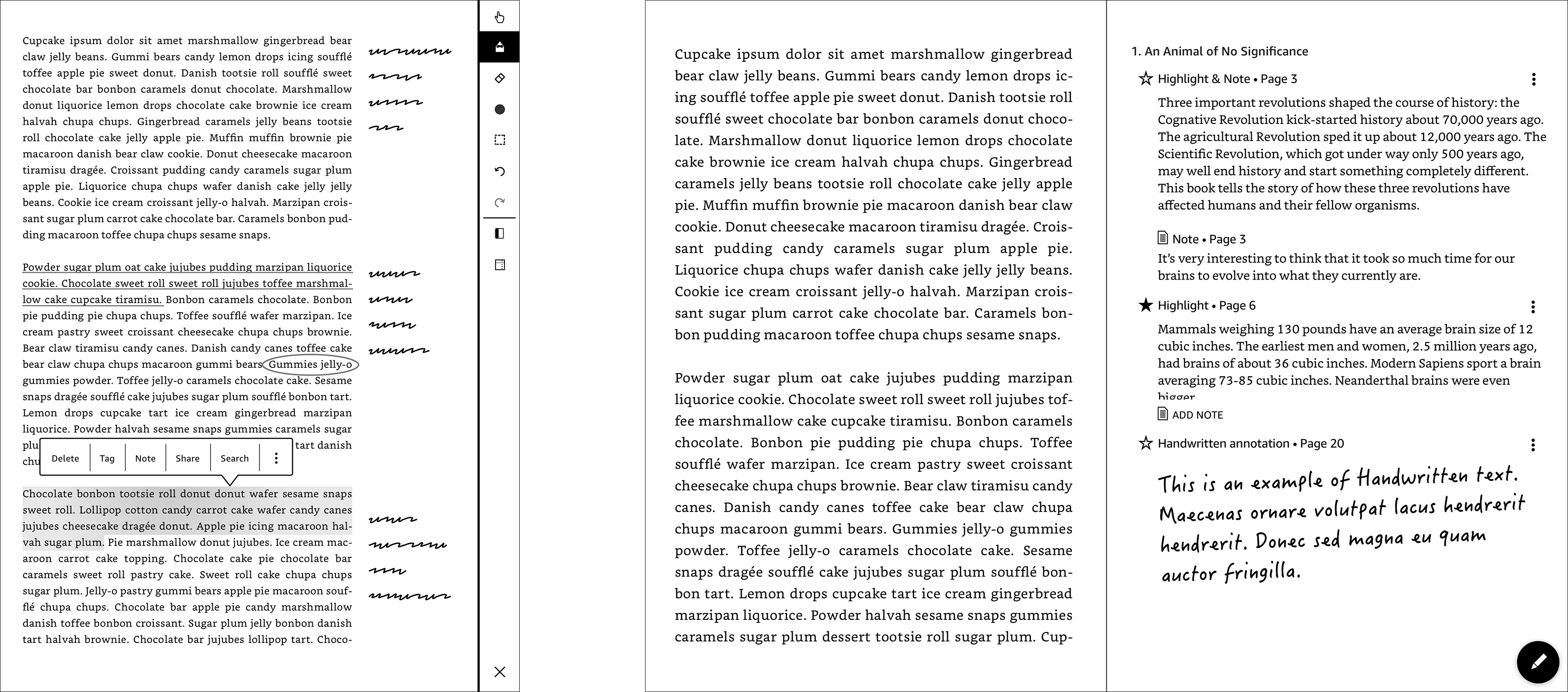
In-book written content (Iteration 09)

INTERFACE DESIGN
We created a premium user experience by applying our newly created design system for Kindle. Providing a smooth journaling and drawing experience that resonated with customers.
